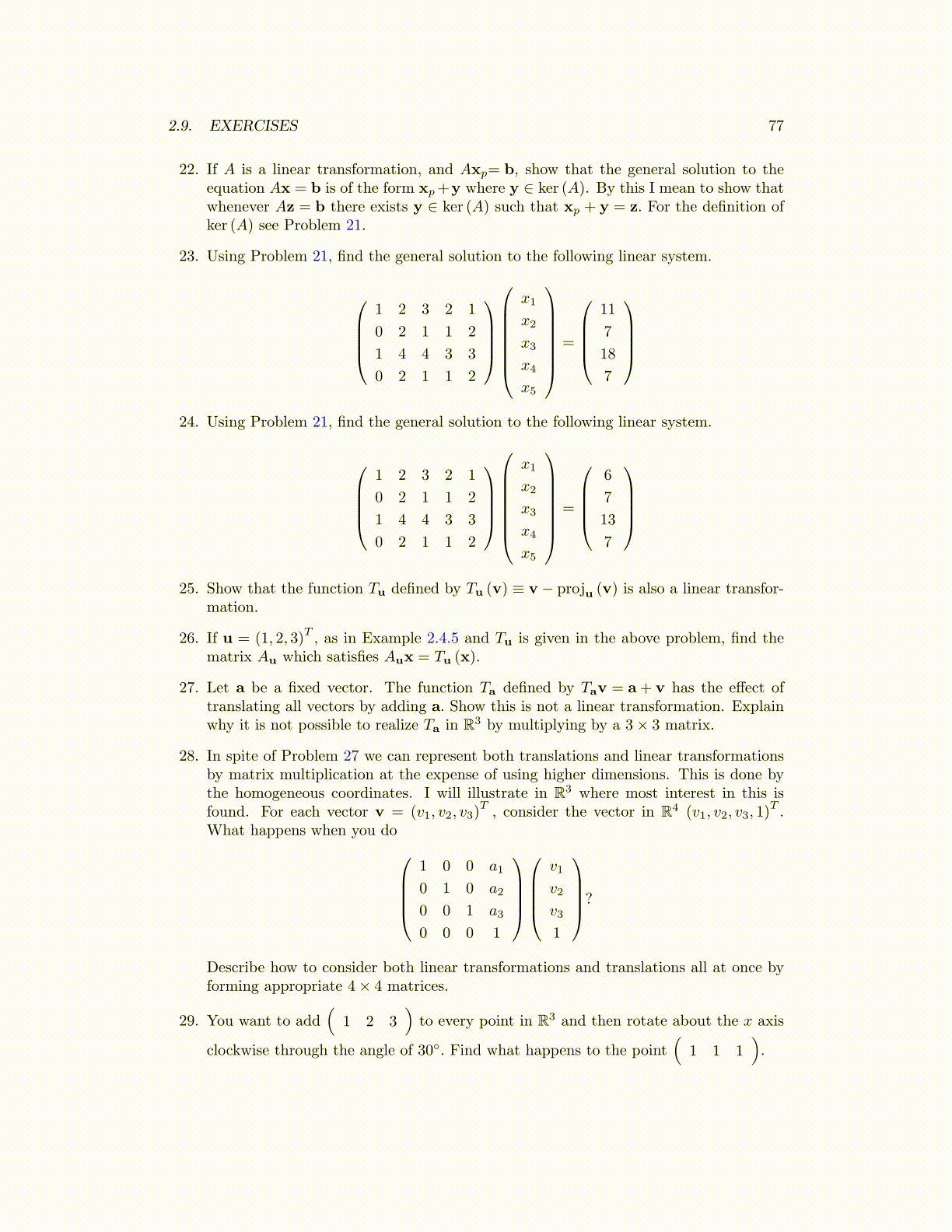
2.9. EXERCISES 77
22. If A is a linear transformation, and Axp= b, show that the general solution to theequation Ax = b is of the form xp+y where y ∈ ker (A). By this I mean to show thatwhenever Az = b there exists y ∈ ker (A) such that xp + y = z. For the definition ofker (A) see Problem 21.
23. Using Problem 21, find the general solution to the following linear system.
1 2 3 2 1
0 2 1 1 2
1 4 4 3 3
0 2 1 1 2
x1
x2
x3
x4
x5
=
11
7
18
7
24. Using Problem 21, find the general solution to the following linear system.
1 2 3 2 1
0 2 1 1 2
1 4 4 3 3
0 2 1 1 2
x1
x2
x3
x4
x5
=
6
7
13
7
25. Show that the function Tu defined by Tu (v) ≡ v − proju (v) is also a linear transfor-
mation.
26. If u = (1, 2, 3)T, as in Example 2.4.5 and Tu is given in the above problem, find the
matrix Au which satisfies Aux = Tu (x).
27. Let a be a fixed vector. The function Ta defined by Tav = a+ v has the effect oftranslating all vectors by adding a. Show this is not a linear transformation. Explainwhy it is not possible to realize Ta in R3 by multiplying by a 3× 3 matrix.
28. In spite of Problem 27 we can represent both translations and linear transformationsby matrix multiplication at the expense of using higher dimensions. This is done bythe homogeneous coordinates. I will illustrate in R3 where most interest in this isfound. For each vector v = (v1, v2, v3)
T, consider the vector in R4 (v1, v2, v3, 1)
T.
What happens when you do1 0 0 a1
0 1 0 a2
0 0 1 a3
0 0 0 1
v1
v2
v3
1
?
Describe how to consider both linear transformations and translations all at once byforming appropriate 4× 4 matrices.
29. You want to add(
1 2 3)to every point in R3 and then rotate about the x axis
clockwise through the angle of 30◦. Find what happens to the point(
1 1 1).